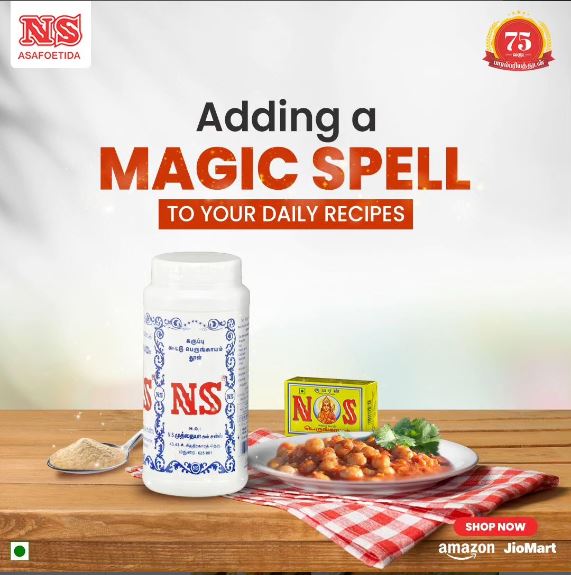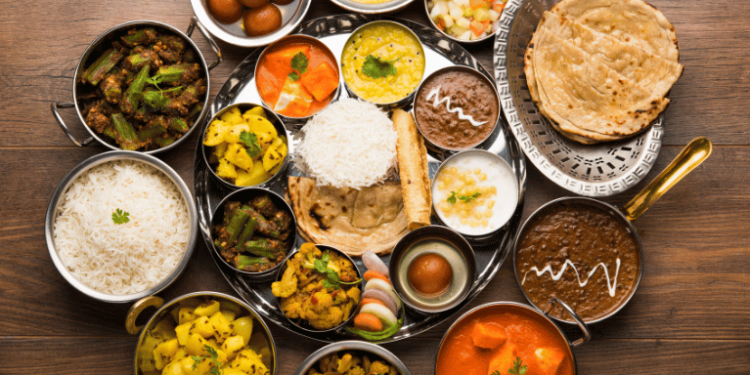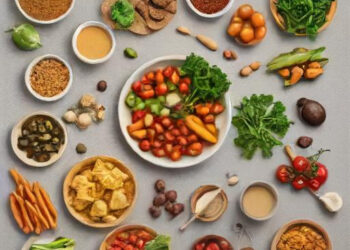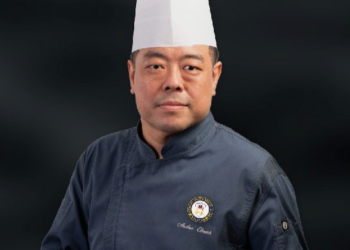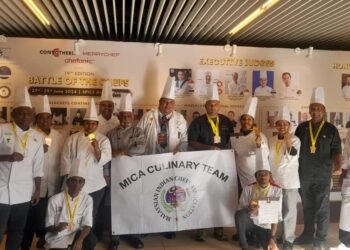THIS ARTICLE IS POWERED BY
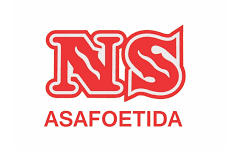
-Thulasi (cbedit@imaws.org)
The food industry in Vijayawada, the designated capital of Andhra Pradesh, is gradually evolving and this is evident in the testimonials by different restaurateurs in the city. The pandemic has dealt a severe blow to the food industry and restaurant owners admitted that they are still limping back to normalcy. The eating patterns have slightly shifted from binge to healthy and hygienic but it only had been temporary, says Kumar, Owner, Desi Tadka, Pure Veg Restaurant (North Indian), Vijayawada.

A majority of the food connoisseurs prefer South Indian food and surviving in such an atmosphere is really proving to be a challenge to some restaurants providing only North Indian cuisine, he added. Further, “Yes, there has been a significant shift from pleasure eating to healthy eating during the pandemic but as things are coming back to normal, people seem to be switching to their old eating habits like savouring spicy food and also neglecting hygiene.”
In Vijayawada, night eating hubs have increased and people are flocking to those places forgetting that many of them are unhygienic. Organized street food centers are posing a threat to restaurants in any big/small city.
Unhygienic Street Food
Street-side food is mostly unhygienic as they don’t operate with mineral water. There is no proper eating place. The customer needs to stand and eat and when there is any wind at that time, several microorganisms also come with the air contaminating the food. Even the food plates are not so clean.
Further, they also use sub-standard oils for cooking. If a restaurateur has to operate, he will have to use quality and standard products. There are certain rules for the restaurants but street food vendors do not give any bills and you cannot question him if there is any food poisoning or other problem, he pointed out.
In street food, there is a chance of the cook’s sweat going into the food and people still prefer eating it as they are able to save some bucks. During the pandemic, there was a glimpse of awareness among the people about health and hygiene but now, they have become lenient.
“I think only 5% of the people have taken the pandemic and its warnings seriously and have changed their eating habits focusing on quality food and timely eating, hygienic food, and home food. People aged above 45 years seem to have taken the pandemic seriously and switched to healthy eating but the youngsters are still with the erratic eating routines.”
There is a difference between dhabas and restaurants. In dhabas, everything is pre-prepared but in restaurants, dishes are prepared on order. When things are made on order, there is no concept of leftovers and hence, the chance of leftovers being served the next day is very low.
Stale Food Will Sink Business
The stale food concept exists in the food industry but not everywhere. If stale food is served, the reputation of the restaurant also takes a beating, and the number of visitors will decline, he explained.
Restaurants have to take the FSSAI license and hence, we usually stick to the norms and use the standard fortified oils only. FSSAI officials also inspect our ingredients and we are more focused on creating a brand for our restaurants and earning a living from it on a regular basis.
To reduce the cost, many people in the industry use palm oil which is the main culprit causing health issues. As per science, it is not healthy for the heart and it creates blockages in the heart.
Street food compromises on the quality aspect as there is no monitoring authority. Based on the geographical situation, the type of oil also differs. In the North, people use mustard oil, in the South, they use sesame oil and in Kerala, they use coconut oil, in Andhra, more groundnut and sunflower oil is used. These days, cold-pressed oils are coming into popularity, he said. Street food supplies the product at a low cost and hence, people cannot expect any quality.
Dealing with Leftover Food
“As I am running a vegetarian restaurant, I do not have much of leftovers either in my kitchen or from the customers’ plates. In the case of non-veg restaurants, they keep leftovers in the fridges but in vegetarian restaurants, vegetables cannot be reused once they are boiled. Except for some raita or salads, everything is made to order.”
Whenever there is leftover, many of the customers get it packed and take it along with them. 90% of customers take leftover food with them. The remaining leftovers are eaten by our staff, as they cannot afford to buy and eat them, he explained.

Voluntary organizations like Food Army which takes leftovers from restaurants and distributes them to the poor are not active in Vijayawada. The USP of my restaurant is North Indian vegetarian cuisine, he informed.
Coming to other challenges, there is less number of takers for vegetarian food, and getting the staff is another problem as many of the labourers consume non-veg and they are not comfortable working here.
The food industry is one such thing where we cannot satisfy all the customers. What is more spicy for some might be less spicy for others. Such variations exist and even this is a practical challenge, he revealed.
Meanwhile, new restaurants are finding it hard to draw customers to the city.
“Our main challenge is drawing more customers. We started the restaurants on December 6, 2021, which is after the pandemic. The people in Vijayawada prefer spicy food and they did not like the dishes in our restaurant. They complained that it was bland. Making them accustomed to less spicy food (healthy food) has been the major thing on our agenda in the initial days. Now, they are slowly getting used to it,’ says Ashwin Shah, Manager of Under the Woods, Vijayawada.
The restaurant serves North Indian, Tandoori, Mexican, Italian, and South Indian food. In the snacks section, people like Chinese dishes, and in the main course, many relish North Indian cuisine. Paneer, cashew, capsicum, peas, and other vegetables are served in this restaurant.
“We do not have any challenges with regard to the supply of human resources. Having good contacts both in Mumbai and even in this city, I can manage a crisis situation whenever there is a dearth of labour supply,” said Shah, in a confident tone.
Craze for New Menu
“People want something different. They want a different name – we have to develop the craze among the foodies. We have to decorate the food and then focus on the taste. Either we have to put in some clay pots or on banana leaves,” pointed out Yelamanchili Bala Gangadhara Tilak, YES SIR EVENTS, Vijayawada.

“Being cold areas, all the chat varieties have been designed as starters to help the foodies open up to relishing eating the main course in North India. Even pani puri is also a starter sort of thing. There are nearly 60 types of pani puris and chats.”
After the pandemic, there has been stress on organic and healthy eating but there is nothing like organic. “Is any product really organic? ,” asked Tilak.
Caterers have the responsibility to maintain all the dishes right from the beginning of the event to the last. Otherwise, the caterer will lose his reputation. In such a situation, there will be 10-15% of wastage.
Further, we cannot send the leftover items to any orphanages or old age homes because the dishes start rotting.
Catering is different from restaurant
As caterers pay more than the hotels, there is no shortage of labour for us. If a hotelier pays Rs 800-Rs 1000 a day, I pay Rs 2000 per day and so, cooks will easily flock to us and do the work. There is a shortage of workforce for caterers, Tilak said. For the labourers involved in the cleaning work, we pay Rs 1200 a day while in the outside market, they are paid Rs 500. So, even in this area, caterers do not face any challenge, he added.
Coming to the serving of food in any event, we even get polytechnic and ITI students to do that work. This apart, they also will get food. Further, they will have a chance to steal things.

Tilak proudly claimed that he had been a caterer at the Assembly supplying food to the MLAs and MLCs for three years. “At that time, I never used to supply food to the security personnel or the MLAs’ drivers,” he said.
Rama Krishna Chilukuri CEO, of Mayuri Caterers, another leading caterer in Vijayawada says the demand for South Indian Foods is still high. “The challenges for a hotel owner might be different from what a caterer faces. In our case, the customer gives the order in advance. Of course, while many localities are traveling across the regions, their expectations towards food have changed. For example, say, North Indian food. Few people do ask for North Indian food. However, there is no major cultural or social shift in the food we prepare.”
Consumption cut down to tackle soaring prices
‘When the price of a specific vegetable is high, we try to reduce its consumption. We search for an alternative. Try to avoid the vegetable as the price is high,” says P. Vyasa Chaitanya, Manager, Ramayya Mess, Vijayawada.
“We do use the vegetable but try to limit its use. We try to reduce the use of the vegetable by at least 1/3rd of the normal consumption.” Running a meals hotel itself is a tough business because we do not know when customers will flood the hotel and when their numbers will dwindle.

Availability of workforce is also a challenge as there will be a shortage of serving staff. There will not be many males available to work as serving staff. Female staff will be available in abundant numbers but we prefer males because catching the containers throughout the serving duration cannot be done by females. Males will have more stamina compared to women, he said.
To avoid a crisis, we always maintain at least half a dozen more employees than the required number of personnel. When the number of workers on leave is more, we go for temporary workers. At times, even temporary staff will not be available if there are more marriages and functions, then we have to manage the show by ourselves.
Coming to the products and vegetables, there will be no problem as they will be available on payment.
